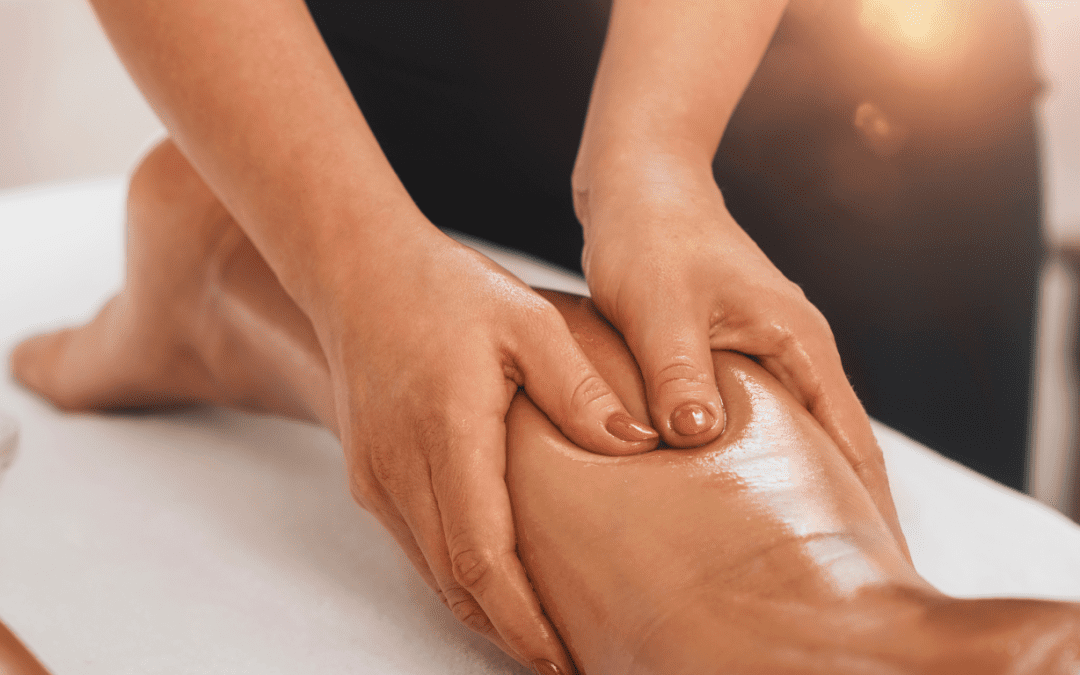Busting Common Myths: What’s Not Happening During Massage Therapy
Massage therapy is often surrounded by misconceptions, especially about what happens beneath the surface during a session. Terms like “breaking down adhesions” or “working out knots” are often used, but they don’t always align with the science of how massage works. In this article, we’ll debunk some of the most common myths about massage therapy and explain what’s not happening during a session—while highlighting what actually makes massage so effective.
Massage Myth 1: Deep Pressure Is Always Necessary
One common belief is that the deeper the pressure, the better the results. Many people think that unless a massage feels intense or even painful, it isn’t effective.
Reality:
The effectiveness of massage doesn’t depend on how much pressure is applied but rather on how it interacts with the nervous system. Too much pressure can activate the body’s protective response, leading to muscle tension and even discomfort. Instead, skilled massage therapists use the appropriate pressure to relax tissues and communicate with the nervous system, encouraging the body to release tension naturally.
Gentler techniques often provide equally effective, if not better, results by reducing stress and calming the nervous system.
Massage Myth 2: Massage Breaks Down Adhesions
It’s common to hear that massage “breaks down adhesions” or “releases scar tissue.” This concept has fueled the belief that therapists can physically manipulate or break apart fibrous tissues beneath the skin.
Reality:
Massage doesn’t physically break down adhesions or scar tissue. Adhesions are dense formations of connective tissue that cannot be simply “broken” by manual pressure. What massage does is improve blood flow, reduce tension, and encourage normal tissue mobility.
Massage may also enhance the elasticity of the surrounding tissues, making movement feel freer, but this occurs through nervous system responses and improved hydration of fascia, not through mechanical breakdown.
Massage Myth 3: Knots Are Tangled Muscles That Need to Be Worked Out
Many clients report feeling “knots” in their muscles and believe these need to be pressed out or removed to relieve pain and tension.
Reality:
Muscle “knots” are not literal tangles. They are areas of hypertonicity (increased tension) or trigger points—sensitive spots in the muscle that can cause referred pain. These areas respond to techniques that reduce neural hyperactivity, not by being physically “untied” or broken down.
Massage therapy works by calming the nervous system and improving circulation in these tense areas, helping the body to release the tension naturally.
Massage Myth 4: Massage Flushes Out Toxins
The idea that massage can “detoxify” the body by flushing out toxins is widespread, with many believing it’s necessary to drink lots of water post-massage to aid this process.
Reality:
Your liver and kidneys are responsible for detoxifying your body, not your muscles. Massage improves circulation and lymphatic flow, which supports the body’s natural processes, but it doesn’t remove toxins directly. While staying hydrated is always beneficial, the idea of massage as a “detox” isn’t supported by science.
Massage Myth 5: You Need to Feel Sore After a Massage for It to Work
Many people think that post-massage soreness is a sign that the therapist did a good job, especially after a deep tissue massage.
Reality:
Soreness after a massage can occur, but it’s not an indicator of effectiveness. In fact, excessive soreness might mean the pressure used was too intense for your tissues. A skilled therapist aims to work within your body’s comfort zone, promoting relaxation and healing without unnecessary discomfort.
Massage therapy is most effective when it feels good during and after the session. If you’re experiencing significant soreness, let your therapist know so they can adjust their approach.
What Actually Happens During Massage Therapy
Now that we’ve cleared up some misconceptions, let’s look at what’s really happening during massage therapy:
- Nervous System Regulation: Massage activates the parasympathetic nervous system, promoting relaxation and reducing stress.
- Improved Circulation: Gentle pressure increases blood and lymph flow, delivering oxygen and nutrients to tissues and supporting healing.
- Muscle Relaxation: Massage helps calm overactive muscle fibers and reduce tension.
- Pain Modulation: By stimulating sensory receptors in the skin, massage can interrupt pain signals and promote the release of endorphins.
- Fascial Hydration: Massage can improve the movement and hydration of fascia, the connective tissue surrounding muscles, enhancing mobility and comfort.
The Takeaway
Massage therapy is a powerful tool for relaxation, recovery, and pain management, but it’s not about physically breaking down tissues or using excessive force. Instead, it works through gentle, evidence-based mechanisms that support your body’s natural processes.
If you’ve been holding onto any of these misconceptions, it’s time to let them go and embrace what massage therapy truly offers—a path to healing through care, precision, and a deep understanding of the body.
Ready to experience the real benefits of massage therapy? Book your session today and feel the difference!
Discover the truth behind therapeutic touch at Remedy Wellness Centre.

